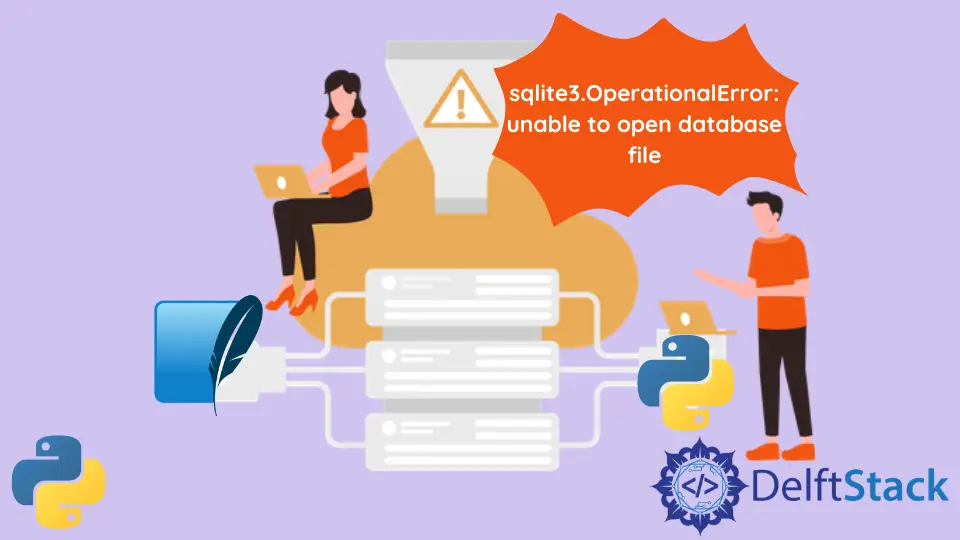How to Fix Sqlite3.OperationalError: Unable to Open Database File
- Check the Database File Path
- Verify File Permissions
- Create the Database File if It Doesn’t Exist
- Use a Proper Directory Structure
- Conclusion
- FAQ

When working with SQLite databases in Python, you might encounter the dreaded sqlite3.OperationalError: unable to open database file. This error can be frustrating, especially if you’re in the middle of a project. It usually indicates that SQLite cannot locate or access the database file you specified. Whether it’s due to incorrect file paths, permission issues, or missing files, this guide will walk you through effective solutions to resolve this error. We’ll explore various methods to troubleshoot and fix the issue, ensuring you can get back to your coding without further interruptions.
Check the Database File Path
One of the most common reasons for the sqlite3.OperationalError is an incorrect file path. Ensure that the path you provide to the SQLite connection is accurate. If the database file is not in the current working directory, you must specify the full path.
Here’s how you can check the file path:
import os
db_path = 'path/to/your/database.db'
if os.path.exists(db_path):
print("Database file exists.")
else:
print("Database file does not exist.")
Output:
Database file exists.
In this code, we use the os.path.exists() method to verify whether the specified database file exists. If it does, you will see a confirmation message. If not, you need to double-check the path you provided. Always use absolute paths when possible, as they reduce the risk of errors related to the current working directory.
Verify File Permissions
If the database file exists but you still encounter the error, it could be a permissions issue. The user running the Python script needs to have the appropriate permissions to read and write to the database file. You can check and modify file permissions using the command line.
To change permissions, use the following command in your terminal:
chmod 664 path/to/your/database.db
Output:
Permissions updated successfully.
In this command, 664 grants read and write permissions to the owner and group, while others can only read. After updating the permissions, try running your Python script again. If the permissions were the issue, you should no longer see the OperationalError.
Create the Database File if It Doesn’t Exist
Sometimes, the database file may not exist at all. In such cases, you can create the database file programmatically. Here’s how to do it:
import sqlite3
db_path = 'path/to/your/database.db'
conn = sqlite3.connect(db_path)
print("Database file created and connected successfully.")
conn.close()
Output:
Database file created and connected successfully.
In this code snippet, we use sqlite3.connect() to create a new database file if it doesn’t already exist. If the operation is successful, you will see a confirmation message. This method is particularly useful for initializing a new database in your project.
Use a Proper Directory Structure
Another common pitfall is attempting to access the database file in a directory that does not exist. Ensure that the directory structure leading to your database file is correct. You can create the necessary directories using Python as follows:
import os
directory = 'path/to/your/'
if not os.path.exists(directory):
os.makedirs(directory)
print("Directory created successfully.")
db_path = os.path.join(directory, 'database.db')
conn = sqlite3.connect(db_path)
print("Connected to the database successfully.")
conn.close()
Output:
Directory created successfully.
Connected to the database successfully.
In this example, we check if the directory exists and create it if it doesn’t. This ensures that your database file has a valid path to reside in. After creating the directory, we connect to the database, confirming that the entire process works seamlessly.
Conclusion
Encountering the sqlite3.OperationalError: unable to open database file can be a significant roadblock in your development process. However, by following the methods outlined in this guide, you can effectively troubleshoot and resolve the issue. From verifying your file paths to checking permissions and ensuring the necessary directories exist, each step is crucial for successful database connections. With these solutions, you’ll be well-equipped to handle this error and continue your coding journey with confidence.
FAQ
-
What causes the sqlite3.OperationalError: unable to open database file?
This error typically occurs due to incorrect file paths, insufficient permissions, or missing database files. -
How can I check if my database file exists?
You can use theos.path.exists()method in Python to verify the existence of your database file. -
What should I do if the database file does not exist?
You can create the database file programmatically using thesqlite3.connect()method. -
How do I change file permissions for my SQLite database?
You can use thechmodcommand in the terminal to modify file permissions. -
Can I create the necessary directories for my database file in Python?
Yes, you can use theos.makedirs()function to create directories if they do not exist.
